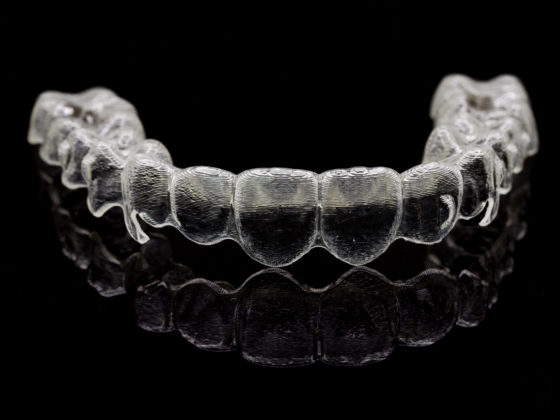 When I think of my teenage years, I often reminisce about the awkwardness that resulted from body odor, sudden growth spurts, and of course, bad teeth. What I mean by bad teeth isn’t necessarily the teeth itself, but the physical attempt to change our teeth by braces.
When I think of my teenage years, I often reminisce about the awkwardness that resulted from body odor, sudden growth spurts, and of course, bad teeth. What I mean by bad teeth isn’t necessarily the teeth itself, but the physical attempt to change our teeth by braces.
Braces are a stigma of adolescent awkwardness, almost like a rite of passage into adulthood. And truthfully, most people dislike braces just because of its appearance. Recently technology has offered a compromise between appearance and attaining a beautiful smile with Invisalign (a set of clear plastic aligners that move teeth incrementally.
Visual Differences between Braces and Invisalign
The first noticeable difference from Invisalign to braces is they are near invisible when worn. For adults trying to correct their teeth alignment, this solves the fear of having a brace face. In this sense they are like braces for grown ups. However, teenagers can wear Invisalign too. Thinking about it now, my melodramatic teenage self would be more confident with a set of clear aligners.
Freedom of Food Choice
If you’re a foodie like me, having removable aligners is a convincing reason to use Invisalign. There are no food restrictions when wearing Invisalign. With braces, my dentist frequently told me not to eat certain foods since it would get trapped in the wires. Thus I avoided many foods, simply because cutting them into small pieces to eat is too tiresome.
Functional
Stemming from the point above, apart from having the freedom of food choices, Invisalign doesn’t inhibit you from brushing or flossing your teeth. Invisalign is very functional and is built into our existing lifestyle. Your dentist will be happier too—now you have no excuse not to floss right?
Which is more effective?
Realistically, we know that plastic is weaker than metal. While braces, with their metal and wiring are stronger, plastic aligners can still achieve the same results. It all depends on your teeth condition, determined by your dentist. Invisalign treats mild to moderate cases of teeth conditions, whereas severe conditions require braces.
It’s too one-sided to state that one method is better than the other. Both Invisalign and braces have their pros and cons. Ultimately it comes down to the specific needs for an individual person.
Dentist Procedures
Invisalign is offered at dentist offices, which is great because most people have a regular dentist but not an orthodontist. Like braces, your dentist will monitor your progress with monthly checkups. Visiting your dentist regularly is important, because your dentist will use your progress to create a specialized treatment plan.

